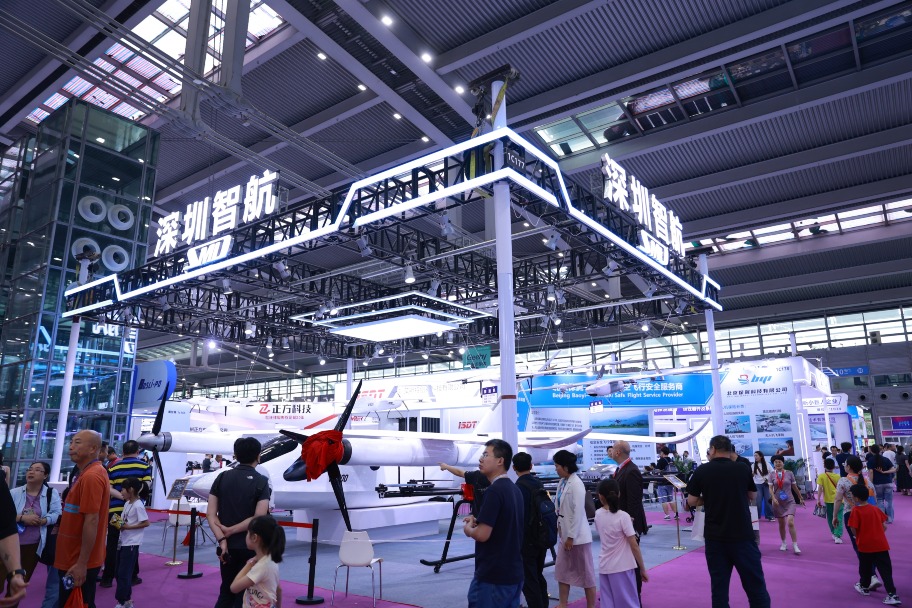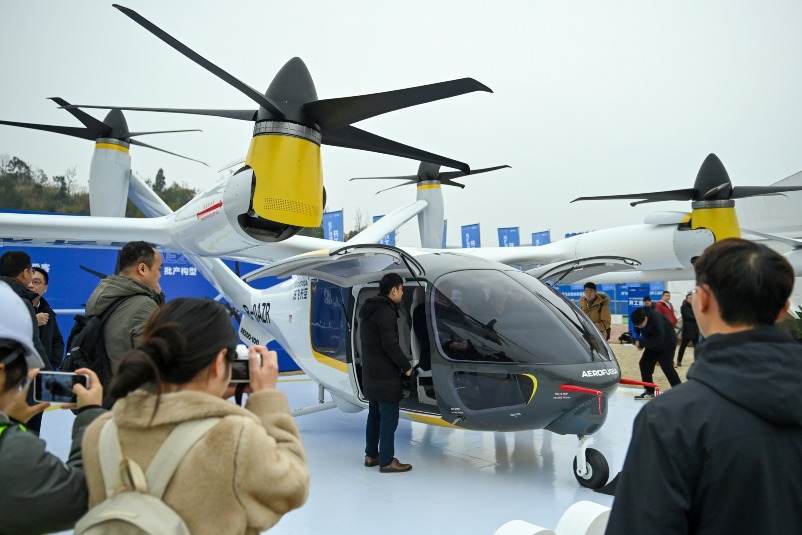Published : 2025-09-19
Introduction
Low-altitude economy refers to emerging economic activities primarily conducted using drones as carriers in airspace below 1,000 metres. It holds immense potential and may even become a new driving force for economic growth. How much do you know about the low-altitude economy? What are its application scenarios? Let’s explore China’s low-altitude economy together!
In recent years, China has been vigorously promoting the low-altitude economy. To introduce the current development of the newly emerging economy in China, this article specifically selects three key Chinese cities that have achieved remarkable results and have different focuses.
How does Shenzhen become the “City of the Sky”? How has Chengdu leveraged the low-altitude economy to promote the transformation of its military industry? And how has Hefei, as a hub for scientific research, laid the technological foundation for the low-altitude economy?
Shenzhen: All-out effort to build a “City of the Sky”

When talking about China’s low-altitude economy cities, your might first think of Shenzhen, as the city is committed to building a “City of the Sky”. (Image Source: VCG)
For Shenzhen City, Guangdong Province, a city renowned for its technological innovation, the greatest advantage in the high-tech-dependent low-altitude economy is its industrial clusters.
Shenzhen is home to over 1,700 enterprises related to the low-altitude economy, covering the entire chain of R&D, manufacturing, and operations, making it the city with the highest concentration and most complete ecosystem for the low-altitude economy industry chain in the world.
For example, the market share of Phoenix-Wings (豐翼科技), a cargo drone company owned by SF Express, in logistics drones for city-level routes firmly ranks 1st in the country, and DJI, the world’s leading drone manufacturer, holds 70% of the global consumer drone market.
Data shows that as of 2023, the output value of Shenzhen’s low-altitude economy exceeded 90 billion RMB; and in 2024, the number of cargo flights reached 776,000, a year-on-year increase of 27%.
Two major factors behind its success are Shenzhen’s specialised legislation and digital infrastructure.
On 1 February 2024, Shenzhen formally implemented the nation’s first specialised regulation, the “Shenzhen Special Economic Zone Regulations on the Promotion of the low-altitude economy Industry” (《深圳經濟特區低空經濟產業促進條例》), pioneering a “layered and categorised” airspace management model.
In the same year, Shenzhen also launched the “SILAS” system, which integrates artificial intelligence with the low-altitude economy to enable functions such as flight conflict alerts and intelligent air route planning.
In terms of digital infrastructure, Shenzhen has built the nation’s largest 5G-A low-altitude communication and sensing network, achieving continuous 5G coverage in airspace below 120 metres, supported by 483 low-altitude take-off and landing points.
Shenzhen has cumulatively opened nearly 300 regular air routes, with cargo flights exceeding 1.7 million, accounting for about 30% of the national total. The city has enabled large-scale operations in four major scenarios: medical emergency rescue, logistics and distribution, urban governance, and intercity transport.
Chengdu: Best example of military industry transformation

Tech company Aerofugia (沃飛長空) has established its global headquarters in Chengdu, Sichuan Province, and its signature product is the self-developed eVTOL aircraft, the “AE200”. (Image Source: VCG)
Chengdu City in Sichuan Province is a renowned city for its military industry, especially in the aviation sector. The city is one of the few places in China with complete independent production capabilities, which gives it the advantage of a profound industrial foundation for manned aircraft when promoting the development of the low-altitude economy.
Relying on military enterprises such as the Chengdu Aircraft Corporation (CAC), Chengdu has gathered over 500 enterprises related to the low-altitude economy and more than 1,500 drone operating companies. Among them, industrial drone operating enterprises account for a significant proportion, with their export volume ranking first in the country, and their market share of medium to large fixed-wing drones also ranking first nationwide.
For instance, Aerofugia (沃飛長空), a new general aviation enterprise under the Geely Technology Group, is one of the “star players” of Sichuan’s low-altitude economy. Its self-developed “AE200” electric vertical take-off and landing (eVTOL) aircraft completed its public demonstration flight in October 2024, making breakthroughs in areas such as airworthiness certification and scenario applications.
As one of the country’s eVTOL pilot cities, Chengdu introduced the “14 Measures for the Low-altitude Economy” in 2025, providing policy support focusing on four aspects: construction of low-altitude infrastructure, enhancement of flight service and supervision capabilities, expansion of low-altitude application scenarios, and support for the low-altitude industry.
For example, it encourages the commercial operation of low-altitude manned flights. Enterprises that obtain route approval and achieve commercial operation are given a one-off subsidy of up to five million RMB annually, and passengers are given fare subsidies based on the route distance.
Hefei: A hub for scientific research of low-altitude economy

Most of Hefei’s low-altitude economy enterprises are concentrated in the High-tech Zone, which is one of the city’s main industrial parks for the low-altitude economy. (Image Source: VCG)
The development of the low-altitude economy in Hefei City, Anhui Province, is also noteworthy; the city has seen rapid development momentum by supporting the research, development and commercialisation of key technologies.
To encourage the R&D and commercialisation of key technologies for the low-altitude economy, in addition to supporting enterprises, universities and research institutes in strengthening the R&D and application of key technologies such as aviation materials and batteries, Hefei will also provide newly introduced new-style R&D institutions for the low-altitude economy with up to 20 million RMB annually, and a cumulative total of no more than 100 million RMB in funding support.
On the other hand, Hefei is home to dozens of new-style R&D institutions, such as the Hefei Innovation Research Institute of Beihang University, the Deep Space Exploration Lab (DSEL), and the Jianghuai Advanced Technology Center (JHATC), as well as the three major research institutes of the International Advanced Technology Application Promotion Center (Hefei) for low-altitude economy battery energy, flight control systems, and airworthiness services.
In fact, Hefei has already gathered more than 100 high-tech low-altitude economy enterprises, such as EHang and ZeroG, and possesses a complete intelligent manufacturing industrial cluster, providing support and assistance at the supply chain level to promote the development of the low-altitude economy.
Read more: Beyond aerial photography: What are the applications for drones?
Read more: Who and where are the leading drone companies in China?

